Reading Time: 9 Min
Rhinoplasty, also known as a nose job, is one of the most sought-after cosmetic procedures globally. But with any popular procedure, myths and misconceptions can blur the truth. Perhaps you’ve heard whispers about unnatural results, painful recovery, high costs, and much more. As a country with the highest rate of rhinoplasty (Iran, the nose job capital of the world) that is host to many rhinoplasty candidates worldwide, we would love to shed light on this subject. So before you embark on your rhinoplasty journey, let’s separate facts from fiction!
In this blog post, we’ll delve into the world of rhinoplasty myths and truths. We’ll explore common concerns, reveal the real story behind them, and empower you to make informed decisions about your rhinoplasty.
So, get ready to have your questions answered and discover the potential of achieving a balanced, beautiful look you’ll love.
Myth: You look fake after rhinoplasty.
Not true! “Fake” or unnatural can mean different things to different people. You can achieve natural results by discussing your preferences. During your consultation, you’ll discuss your desired outcome with the surgeon. This includes sharing any features you consider unnatural, like a pointy, too upturned, and pinched tip. Skilled surgeons prioritize natural-looking results that harmonize with your facial features. Thanks to modern rhinoplasty techniques, they can focus more on preserving the natural position of your nasal bone, cartilage, and tissue. They consider factors like nasal width, height, and overall facial balance while reshaping your nose to achieve a subtle and aesthetically pleasing outcome and maintain a natural appearance. Specific techniques, like avoiding tip grafts or addressing nostril asymmetry, can further ensure a natural-looking outcome.
In the end, natural or unnatural is defined based on your taste, and what you may consider fake or too much could be a desired result for someone else. Thanks to the mastery and skills of experienced surgeons and the development of advanced techniques, results for different tastes could be achieved through rhinoplasty.
Myth: I can get any result and nose shape I want.
Although you can share desired features, your surgeon will assess your facial structure and recommend a realistic outcome.
While you might dream of a specific nose shape, it’s important to remember everyone’s face is unique. What looks perfect on someone else might not complement yours. Rhinoplasty isn’t just about aesthetics; it’s also about maintaining or improving your breathing function. So, while your surgeon will listen to your desired outcome and discuss features you like during the consultation, they’ll also advise on what’s achievable for your specific facial structure and nasal function. Ultimately, the goal is to create a balanced and beautiful nose that works just as well as it looks.
Also Read: Bony nose and fleshy nose: Which one is better for a ‘dolly’ nose?
Nose Job Packages
Surgery + Hotel + Visa
Transfer + Interpreter
Myth: Nose job hurts.
Not true. nose job is considered as one of the least painful plastic surgeries, with post-surgery pain being defined as mild and rated 0-4 on a scale of 0-10 by most patients. However, the procedure is performed under general anesthesia so you won’t feel pain during surgery. Therefore, what we discuss as pain here refers to discomforts after the surgery, usually a decreasing trend from the day after rhinoplasty to a week or so which could be simply managed by pain medications. You might also experience some discomfort after surgery due to swelling and packing, but pain medication can help manage it.
Myth: Rhinoplasty is aesthetics only.
While many choose rhinoplasty for cosmetic reasons to enhance their facial balance and beauty, it can also address functional problems. Deviated septum, breathing difficulties, and injuries can all be corrected with rhinoplasty.
Also Read: When and how can I wear makeup after rhinoplasty?
Myth: Any surgeon can perform rhinoplasty.
No, not just any surgeon can perform plastic surgery, especially safe and effective rhinoplasty. In many places, technically any licensed medical doctor can perform cosmetic surgery, which falls under the umbrella of plastic surgery. However, this doesn’t mean they have the specialized training and experience for safe and optimal results.
For the best outcome, you should choose a surgeon who is board-certified in plastic surgery with a special focus on facial surgeries or a board-certified in ear, nose, and throat (ENT/ otorhinolaryngology) with special training in aesthetics and plastic surgeries. These certifications signify they’ve completed extensive training specifically focused on medical, cosmetic, and reconstructive procedures of the face, head, and neck.
Generally, you should look for surgeons specializing in facial procedures with a proven track record of successful rhinoplasties.
Also Read: How to choose the best rhinoplasty surgeon?
Myth: You can do as many revisions as you want.
That’s not completely true. While there isn’t a strict maximum, there are factors limiting how many are advisable:
- Scar tissue: Each surgery creates scar tissue, making subsequent procedures more complex and potentially with less predictable outcomes.
- Cartilage availability: Cartilage is often used for structural support during rhinoplasty. With repeated surgeries, there may be less usable cartilage available.
- Blood supply: Multiple surgeries can compromise the blood supply to the nose, which is essential for healing.
- Increasing risks: With each surgery, the risks of complications like infection increase.
So although you can keep undergoing rhinoplasty as long as you think there’s a place for improvement, you should avoid having it when the risks outweigh the benefits and improvements. A high number of rhinoplasties usually come with a risk of complications and longer recovery.
Myth: A botched nose job can’t get fixed.
Not true. Many botched rhinoplasties can be improved or even completely fixed through revision rhinoplasty, but it’s not guaranteed success.
Revision rhinoplasty offers a good chance of improvement for botched surgeries. Studies suggest success rates in the range of 70-80% for achieving some level of correction. However, you should know that complete perfection is not always possible so realistic expectations are crucial. Factors like the complexity and severity of the initial failure, the surgeon’s skill in revision, scar tissue formation, and patient healing can influence a revision rhinoplasty’s success.
Myth: Iranian surgeons can fix every nose job.
As far as surgical skill is concerned. Having the highest rate of rhinoplasty in the world, Iranian surgeons had the chance to acquire incomparable expertise in rhinoplasty by relying on knowledge and practical experience.
This has attracted many nose job candidates from different countries to undergo a rhinoplasty in Iran where they have a higher success rate of achieving what they desire or fixing a prior nose job.
Iran actually does have eminent rhinoplasty surgeons who master both primary and revision rhinoplasties and you’ll probably have the best chance at correcting a botched nose job here in Iran.
However, just as mentioned above, besides the surgeon’s expertise, the level of success in revision cases also depends on some other factors like how badly damaged the nose is.
So while Iranian surgeons can bring about beautiful results out of the most complicated cases, it’s always best to also take enough time to choose a reliable surgeon for your primary rhinoplasty in the first place. If your primary nose job is a fiasco, you should have realistic expectations from your revision surgeries and be more cautious when choosing the second surgeon.
Myth: Rhinoplasty is a simple procedure.
No, rhinoplasty is definitely not a simple procedure. Being a popular and common procedure does not make it easy. It’s more like sculpting a delicate piece of art. The surgeon needs artistry, precision, and a deep understanding of facial anatomy to achieve the desired results. In fact, rhinoplasty is considered one of the most complex procedures in cosmetic surgery for several reasons:
- Delicate Anatomy: The nose is a central facial feature with a complex 3D structure made of bone, cartilage, and skin. Even small adjustments during surgery can significantly impact facial harmony and function. Surgeons need to make precise adjustments with minimal margins for error. Swelling and anesthesia can make it challenging to assess the final outcome during surgery.
- Individualized Approach: Rhinoplasty isn’t a one-size-fits-all procedure. Surgeons need to tailor the approach based on the patient’s unique anatomy, skin type, and desired outcome.
- Functional Considerations: Beyond aesthetics, rhinoplasty can address breathing difficulties. Surgeons need to ensure any structural changes maintain nasal function.
Also Read: Open rhinoplasty vs. closed rhinoplasty
Myth: Rhinoplasty is covered by Insurance.
In most cases, rhinoplasty is not covered by insurance. Insurance companies typically categorize medical treatments into two classes:
- Medically necessary: These procedures are deemed essential for your health and well-being.
- Elective or cosmetic surgery: These procedures are considered optional and focus on improving appearance rather than treating a medical condition.
Rhinoplasty, when performed solely for aesthetic reasons, falls under elective surgery. Since it’s not considered medically necessary, insurance companies generally won’t cover the costs.
However, there’s a chance insurance might cover rhinoplasty if it addresses a medical concern like functional issues and breathing difficulties due to abnormalities or fractures.
If you believe your rhinoplasty has a medical justification, inquire with your insurance provider about coverage specifics. They can advise on the requirements and documentation needed for pre-authorization.
Myth: Rhinoplasty costs a fortune and Is for the Wealthy.
Not true if you’re willing to travel for it. Rhinoplasty can be expensive, but it’s not necessarily exclusive to the wealthy. And there are ways to make rhinoplasty more accessible and affordable. Usually factors like a surgeon’s expertise, reputation, location, anesthesia fees, facility charges, pre-operative tests, and post-operative medications.
People usually use these two tricks to finance their desired nose job:
- Saving Up: Planning and saving in advance can make rhinoplasty more accessible.
- Considering Location: Costs can vary by geographic location. Researching rhinoplasty in different areas might reveal more affordable options while maintaining quality. Many people are willing to take a medical trip to Iran for quality rhinoplasties at reasonable prices.
You May Like to See Before & After Photos of Rhinoplasty
You May Like to See Before & After Photos of Rhinoplasty
Myth: The surgeon needs to break your nose during a rhinoplasty.
No, surgeons don’t necessarily need to break your nose during rhinoplasty. A more accurate term is osteotomy, which refers to a controlled cutting of the nasal bone. Osteotomy is a precise technique with minimal resemblance to breaking a bone. Surgeons use specialized tools for controlled cuts to achieve the planned adjustments. If osteotomy is performed, recovery might take slightly longer due to some bone healing involved. However, not all rhinoplasties require osteotomy.
Procedures focused on the tip or nostrils often involve sculpting cartilage and don’t need bone manipulation. When addressing the bridge or straightening a crooked nose, surgeons might perform an osteotomy to reposition the bone for a desired shape.
Myth: Rhinoplasty makes the nose less functional.
Of course not. Rhinoplasty is supposed to address functional issues as well as aesthetic aspects. A compromised functionality could be a result of an unsuccessful rhinoplasty which may potentially happen in some cases with an overly aggressive reduction of cartilage or tissue. Of course, an experienced surgeon considers both aesthetics and function during surgery to ensure optimal results which minimizes the risk of functional problems.
Truth: You’ll lose sensation after rhinoplasty.
Not permanently. Numbness in the nose and tip may occur due to disruption of nerves during surgery but it’s temporary. Your nose sensation usually fully returns within weeks and it’s not a permanent issue.
Truth: Men get rhinoplasty too!
True. Many people consider rhinoplasty regardless of their gender. Statistics show a significant number of men choose rhinoplasty to improve their appearance or breathing and this rate is on the rise. In 2019, rhinoplasty was reported as the most popular cosmetic procedure among men by the American Society of Plastic Surgeons.
Truth: You’ll have swelling and bruising after a nose job.
Yes, swelling and bruising are very common after rhinoplasty and mainly resolve in the first 1-2 weeks. During rhinoplasty, the surgeon manipulates the bones, cartilage, and soft tissues of the nose to achieve the desired shape. This manipulation inevitably disrupts blood vessels and causes some degree of inflammation. In response to this trauma, your body sends fluids and white blood cells to the area to promote healing and fight off any potential infection. This influx of fluids leads to swelling, while the broken blood vessels cause discoloration in the form of bruising.
Read More: Everything you need to know about bruising after rhinoplasty
Truth: Rhinoplasty leaves a scar.
Minimal scarring is possible. The extent of scarring depends on the procedure type. Closed rhinoplasty almost leaves minimal to no visible scars, while open rhinoplasty might have a small scar on the columella (the area between your nostrils). Skilled surgeons minimize scarring and strategically place incisions for optimal healing.
Truth: You’ll lose your sense of smell and taste after surgery.
Again, only temporarily and in some cases. Swelling can temporarily affect your sense of smell and taste which usually returns within 6 weeks.
Last Word
We tried to discuss most myths about rhinoplasty in this article. If you have heard something not covered here, let us know and we’ll be back with more rhinoplasty myths to unveil the underlying truth.
Remember, rhinoplasty is a personal decision. Understanding the myths and truths empowers you to make informed choices and achieve the results you desire.
Related Articles
Feel free to express your opinions or ask your questions regarding the article


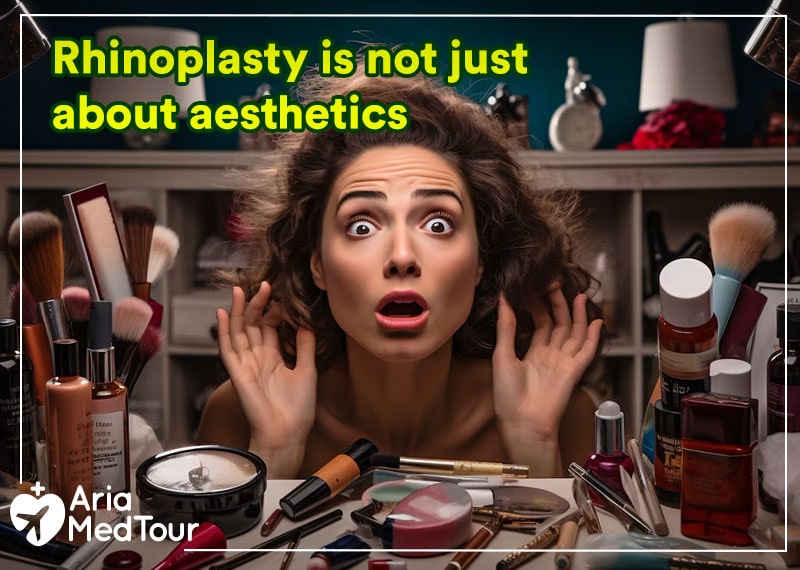

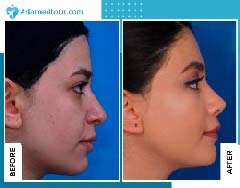

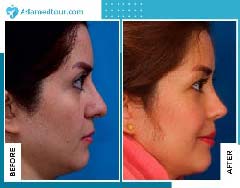

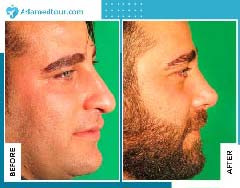


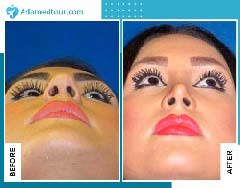

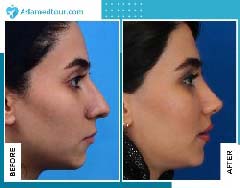





When & How Can I Wear Makeup After Rhinoplasty?
Skin Care After Rhinoplasty
Risks and Potential Complications of Rhinoplasty
How to Clean My Nose After Rhinoplasty?
How to Choose the Best Rhinoplasty Surgeon?